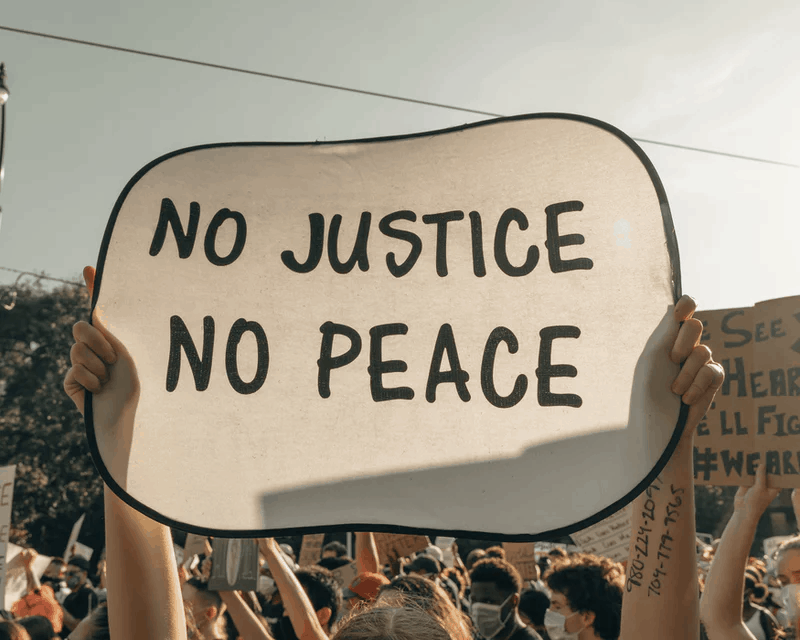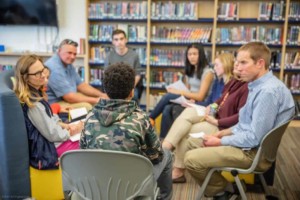Cultivating Critical Consciousness in the Classroom: 10 Counternarrative Resources

By: Michael Kokozos, Ph.D. and Maru Gonzalez, Ed.D.
A fight for racial justice on the streets and within the halls of government. A pandemic that has laid bare the inequities of the U.S. healthcare system. Humanitarian crises around the globe from Yemen to Lebanon. We are indeed living in unprecedented times. Facilitating greater understanding in the classroom of the dynamics of peace and conflict as well as oppression, which perpetually manifests violence, and working toward a shared commitment to equity and social justice is imperative for all educators. To that end, storytelling is a powerful pedagogical method for inspiring connection and mutual understanding between and across social identity groups, processing hardships, and reducing prejudice.
When grounded in compassion and trust, storytelling can nurture a sense of self-worth and cultivate critical consciousness or a critical understanding of the role of power and privilege in maintaining systems of oppression, ultimately leading to informed collective action both in and out of the classroom. Such a practice is invaluable, as research indicates that students thrive emotionally, socially, and academically when they feel connected to and supported by their peers and adults, when their perspectives are valued, and when they are encouraged to use their voice to engage in collective action.

The Power of Counternarratives
Beyond cultivating a culture of care, connection, and compassion, storytelling, particularly in the form of counternarratives, can be leveraged pedagogically to develop critical consciousness by exploring how differences in social group membership—specifically those related to power and privilege—perpetuate oppression. Solórzano and Yosso conceptualize counternarrative as “a method of telling the stories of those people whose experiences are not often told.” Such narratives can be particularly meaningful for members of oppressed groups; they can motivate personal connection and self-empowerment for those whose voices are missing from the broader discourse. Recounting stories about oppression, for example, allows marginalized students to make sense of their experiences and find healing.
In addition, counternarratives can provide critical insights regarding the nature of structural oppression and shed light on the need to invoke societal change, which has the power to disrupt, if not change the systems that perpetuate injustice. So while a podium can mark the starting point for storytelling, instilling an ethic of compassion serves as a compass that moves students from the internal to the external or towards increasing levels of analysis—compassion for the self, compassion for the other, compassion for the community, compassion for the world—that can lead to material change.
Pedagogical Applications for Counternarratives
In the classroom, the use of storytelling—guided by an ethic of compassion and informed by critical consciousness—begins by fostering a community of trust, support, and care. After such conditions have been established, students engage in critical reflection to fully understand the dynamics of privilege, power, social location, resistance, and resilience, largely through counternarratives. Once students have a more critical understanding of society and its processes, they are ready to begin sharing their own stories or amplifying the stories of those typically left out of mainstream discourses. This critical understanding, however, ought to consider that neither students of color nor other marginalized students are expected to share their stories as a means of teaching those with dominant identities. The expression of personal narratives coupled with critical reflection is intended to foster greater connection and mutual understanding across differences and develop more confidence in political change to engage in informed action meant to inspire positive change.

Image source: Unsplash
We offer the following ten resources for integrating counternarratives into the classroom with the aim of illuminating inequity at the core of many crises around the world, cultivating critical consciousness, and initiating potentially transformative responses towards social and global change.
Ten Counternarrative Resources
- Humans of N.Y.:The site and social media pages created by photographer Brandon Stanton includes moving series on the Syrian refugee crisis and the plight of American veterans, among other experiences.
- Social Justice TED Talks: A collection of videos that introduce social justice issues into the classroom, from racial violence to gentrification.
- Storytelling Apps: There are many apps to help start the storytelling process; we like Story Dice and Tell Me About This, especially for younger students who might need some inspiration.
- #PassTheMicYouth: A youth-led podcast and blog that aims to highlight youth-centered issues, shine a spotlight on youth activism, and provide educators with tools and resources to cultivate critical consciousnesses.
- Compassion Games: Introduced as “[a] community engagement experience that invites people around the world to inspire one another to reveal and promote acts of compassion that better our lives, our communities, and all life on Earth.” Users can report acts of compassion on a global map and read or share stories on their blog.
- The Wonderment: A website that “seeks to build global awareness, empathy, and engagement through kids’ shared exploration of the world around them.” Users can share stories that translate their curiosities into “paths” for social and global good.
- Our Stories Connect: A helpful book that provides guidelines for creating storytelling groups as well as practical exercises to develop stories. Chapter 8 and Chapter 9 explore immigration stories and emphasize the importance of active listening to the stories of others.
- The Impact of Counternarratives: Insights from a year-long cross-platform pilot study of counternarratives curation, targeting, evaluation, and impact.
- 26 Mini-Films for Exploring Race, Bias, and Identity: These 26 short documentaries (no more than 7 minutes), curated by the NYTimes Learning Network, tackle matters of race, bias, and identity while emphasizing the importance of perspective-taking in the classroom.
- Over 1,000 writing prompts: One of the most popular NYTimes Learning Network resources to help generate storytelling ideas.
- Storytelling for Impact – National Geographic: Free courses for students and educators to support them in using storytelling as a means to encourage environmental awareness and activism.
- Storycorps Connect: An endless supply of stories organized by location, year, and collections like remembering 9/11 and honoring the legacy of Stonewall. StoryCorps “reminds the nation that every story matters and every voice counts.” After listening to these stories, students can interview others to record and share their conversations.
For more, see:
Michael Kokozos is a high school and college social science instructor in Miami, Fla. earning his Ph.D. in education, culture, and society and specializing in critical curricular and pedagogical theory and applications.
Maru Gonzalez, Ed.D., is an assistant professor in the Youth, Family and Community Sciences program at North Carolina State University. Over the course of her career, Dr. Gonzalez has worked with youth in various capacities, including as an educator, researcher, intergroup dialogue facilitator, and school counselor.
Stay in-the-know with innovations in learning by signing up for the weekly Smart Update.






0 Comments
Leave a Comment
Your email address will not be published. All fields are required.